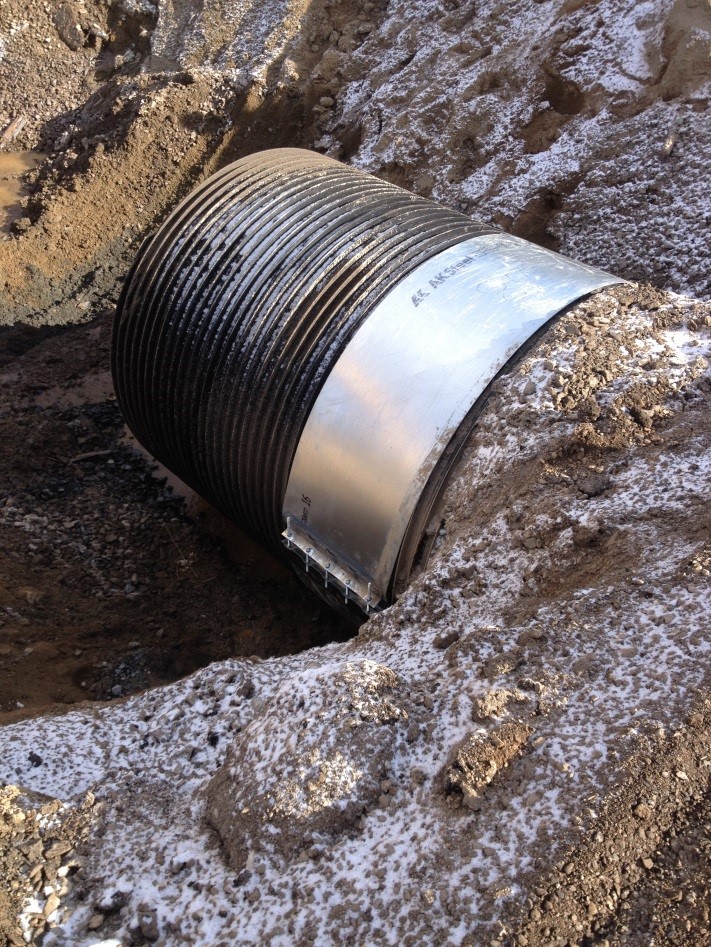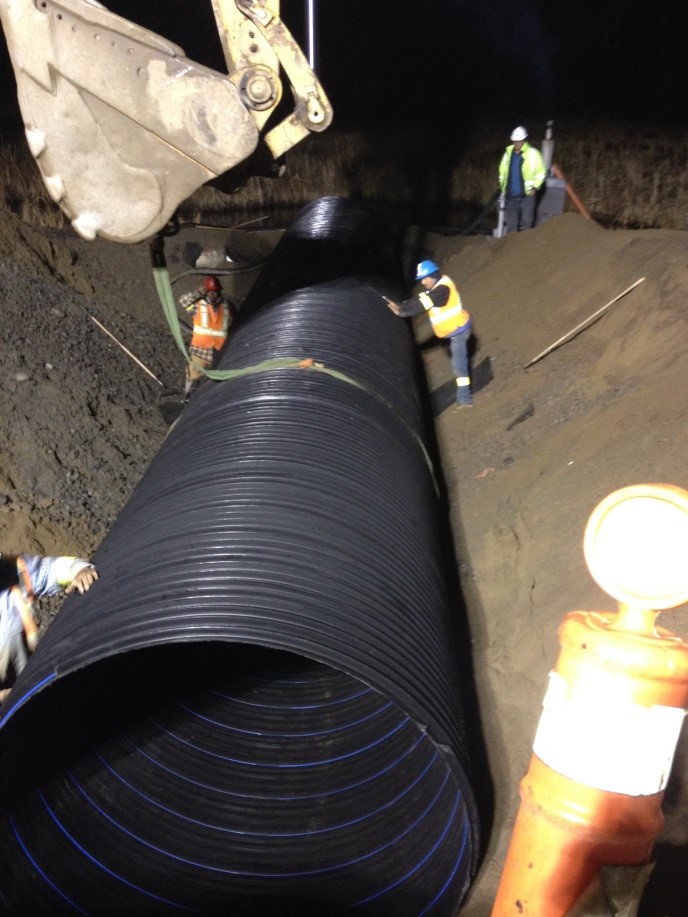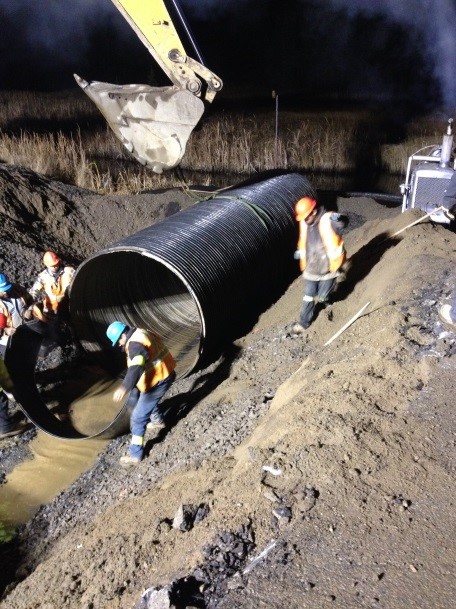
SRPE Pipe Rehabilitation




 Product Utilized:
DuroMaxx® SRPE Pipe
Product Utilized:
DuroMaxx® SRPE Pipe
The Challenge
The replacement pipeline needed to withstand aggressive environmental conditions. The resistivity of the surrounding soil was low and the effluent water was acidic (low pH value). With a soil-tight 21 kPa (3 psi) joint, both the interior and exterior of the culvert could be exposed to acidic effluent. The pipe material needed to achieve the specified service life requirements. The unanticipated discovery of the collapsed pipe also led to concerns of project delays and heightened the need for a product that was readily available and could be installed quickly.
The Solution
In order to improve the structural integrity, Armtec proposed the installation of a 2,130 mm (84 in) diameter Steel Reinforced Polyethylene (SRPE) pipe to replace the failed culvert. The reinforcing steel ribs provide improved pipe stiffness compared to like diameter High Density Polyethylene (HDPE) pipe, thereby providing the benefits of HDPE in much larger pipe sizes. SRPE pipe was also selected for its durability and resistance to chemical attack. The galvanized steel rib component is completely encased in HDPE which has a documented history of performance. The Ministry of Ontario’s “Gravity Pipe Design Guidelines”, April 2014 confirms a design service life of 75 years for HDPE pipe. SRPE pipe possesses the same chemical corrosion resistant properties of HDPE, outperforming other pipe materials such as concrete, steel and aluminum. The SRPE pipe was available in stock and could easily be delivered within the required time frame. Installation of the new culvert proceeded smoothly. The longer pipe lengths required fewer joints compared to conventional large diameter pipe. Soil-tight joints were achieved by using a propriety coupler system. The light weight of the SRPE pipe permitted easier handling and placement during installation. Thanks to product availability and ease of installation, the project was successfully completed in the fall of 2014 despite initial concerns of unexpected delays.


